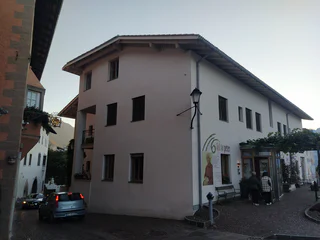
1/2
Lisl-Peter
Pinzano/Pinzon, Montan/Montagna, Alto Adige Wine Road
| Jižní Tyrolsko vinicemi je bohaté na kulturu a historii, které stojí za objevení. |

1/2
Pinzano/Pinzon, Montan/Montagna, Alto Adige Wine Road

1/8
S. Giuseppe al Lago/St. Josef am See, Kaltern an der Weinstraße/Caldaro sulla Strada del Vino, Alto Adige Wine Road

1/3
Pinzano/Pinzon, Montan/Montagna, Alto Adige Wine Road

Ora/Auer, Auer/Ora, Alto Adige Wine Road

1/5
Caldaro Paese/Kaltern Dorf, Kaltern an der Weinstraße/Caldaro sulla Strada del Vino, Alto Adige Wine Road

S. Paolo/St. Pauls - Appiano/Eppan, Eppan an der Weinstaße/Appiano sulla Strada del Vino, Alto Adige Wine Road

1/3
Mazzon/Mazon, Neumarkt/Egna, Alto Adige Wine Road

1/4
Cortaccia s.S.d.V./Kurtatsch, Kurtatsch an der Weinstraße/Cortaccia sulla Strada del Vino, Alto Adige Wine Road

1/3
S. Michele/St. Michael - Appiano/Eppan, Eppan an der Weinstaße/Appiano sulla Strada del Vino, Alto Adige Wine Road

Egna/Neumarkt, Neumarkt/Egna, Alto Adige Wine Road

1/3
Pinzano/Pinzon, Auer/Ora, Alto Adige Wine Road

Pigano/Pigeno, Eppan an der Weinstaße/Appiano sulla Strada del Vino, Alto Adige Wine Road

1/4
Tramin an der Weinstraße/Termeno sulla Strada del Vino, Alto Adige Wine Road

Caldaro Paese/Kaltern Dorf, Kaltern an der Weinstraße/Caldaro sulla Strada del Vino, Alto Adige Wine Road

1/2
Salorno/Salurn, Alto Adige Wine Road

Ronchi/Rungg - Termeno/Tramin, Tramin an der Weinstraße/Termeno sulla Strada del Vino, Alto Adige Wine Road

1/6
Caldaro Paese/Kaltern Dorf, Kaltern an der Weinstraße/Caldaro sulla Strada del Vino, Alto Adige Wine Road

Salorno/Salurn, Alto Adige Wine Road

Mazzon/Mazon, Neumarkt/Egna, Alto Adige Wine Road

1/3
Villa di Mezzo/Mitterdorf, Kaltern an der Weinstraße/Caldaro sulla Strada del Vino, Alto Adige Wine Road

Vilpiano/Vilpian, Terlan/Terlano, Alto Adige Wine Road

1/3
Tablà/Tabland - Naturno/Naturns, Eppan an der Weinstaße/Appiano sulla Strada del Vino, Alto Adige Wine Road

1/3
Mazzon/Mazon, Auer/Ora, Alto Adige Wine Road

Favogna di Sotto/Unterfennberg, Margreid an der Weinstraße/Magrè sulla Strada del Vino, Alto Adige Wine Road

Settequerce/Siebeneich, Terlan/Terlano, Alto Adige Wine Road

1/2
Tramin an der Weinstraße/Termeno sulla Strada del Vino, Alto Adige Wine Road

1/2
Pinzano/Pinzon, Montan/Montagna, Alto Adige Wine Road

Penone/Penon, Kurtatsch an der Weinstraße/Cortaccia sulla Strada del Vino, Alto Adige Wine Road

S. Michele/St. Michael - Appiano/Eppan, Eppan an der Weinstaße/Appiano sulla Strada del Vino, Alto Adige Wine Road

Ora/Auer, Auer/Ora, Alto Adige Wine Road